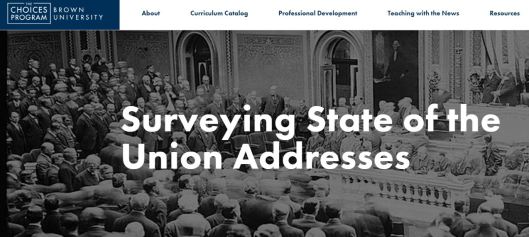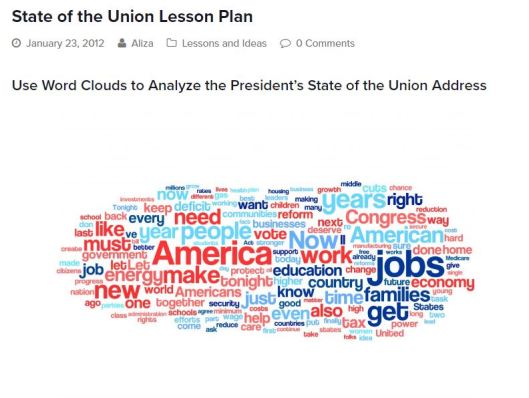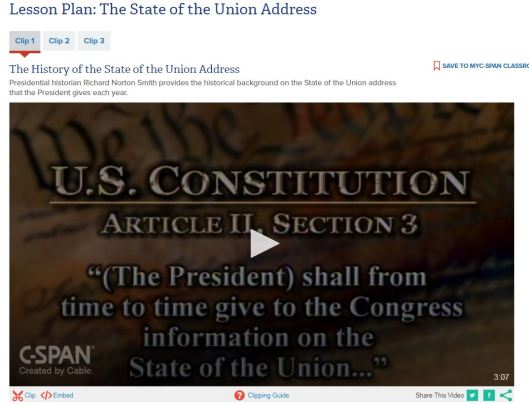It is at this point in the year when the President of the United States provides Congress with a mandatory State of the Union report. While it is now delivered as a speech, it was not always the case. In the long tradition of the State of the Union, delivering it as a speech to Congress is a relatively new development.
So how do you use the State of the Union in your classrooms? This post will share some useful resources for teaching about, discussing, following, or using the State of the Union address as a teaching and learning tool.
Surveying State of the Union Addresses

This approach comes to us from Brown University’s Choices Program. In it, students will
- Understand the constitutional basis and history of the State of the Union Address
- Explore significant moments in twentieth century State of the Union Addresses and identify important historic themes
- Collaborate with classmates to identify likely topics for the State of the Union Address
- Assess the president’s State of the Union Address
This is an extended and engaging lesson, popularly used by social studies teachers of multiple grade levels across the country, and easily adaptable for your classroom.

This lesson is an older one, but still good, from the National Constitutional Center. It looks at the language of the State of the Union, and considers it as a means of engagement with constitutional duties and the broader public. Students will
- Understand the Constitutional requirement for the State of the Union address
- Examine the choices the President makes in the State of the Union Speech
- Describe the events and topics addressed in the State of the Union speech.
- Analyze the President’s legislative plan for the upcoming year
Flocabulary State of the Union

This is not a particularly deep lesson, but it does engage students with analyzing the language and content of the State of the Union using word clouds. What terms, concepts, ideas, language appears the most in the address? What does that mean for the goals and purposes of the president and his or her constitutional duties?
C-Span’s State of the Union Lesson

This lesson, from the good folks at C-Span, has students identify the constitutional requirement for the State of the Union address, examine the issues presented in State of the Union speeches, and analyze President Trump’s proposals for each issue. It has them breaking down the address comparing it to prior presidential addresses and State of the Union speeches.
Online Engagement With the New York Times

The New York Times is hosting an online ‘pre-discussion’ of the SOTU address that allows students to share their opinions and predictions, and then a post-address discussion. While you may not want to have your students as part of the conversation, the guiding questions and approach taken here may be something you want to duplicate in your classroom.
Bonus Opportunity: The 22×20 Campaign

The 22×20 Campaign (so named because there will be 22 million new voters by 2020) is hosting an online ‘viewing party’ and will have an active presence on social media. Students can take part in the conversation by using #22×20 online. This is a great opportunity to engage with other students all across the political spectrum during the address, and can be a fruitful source of ongoing discussion in your classrooms.
